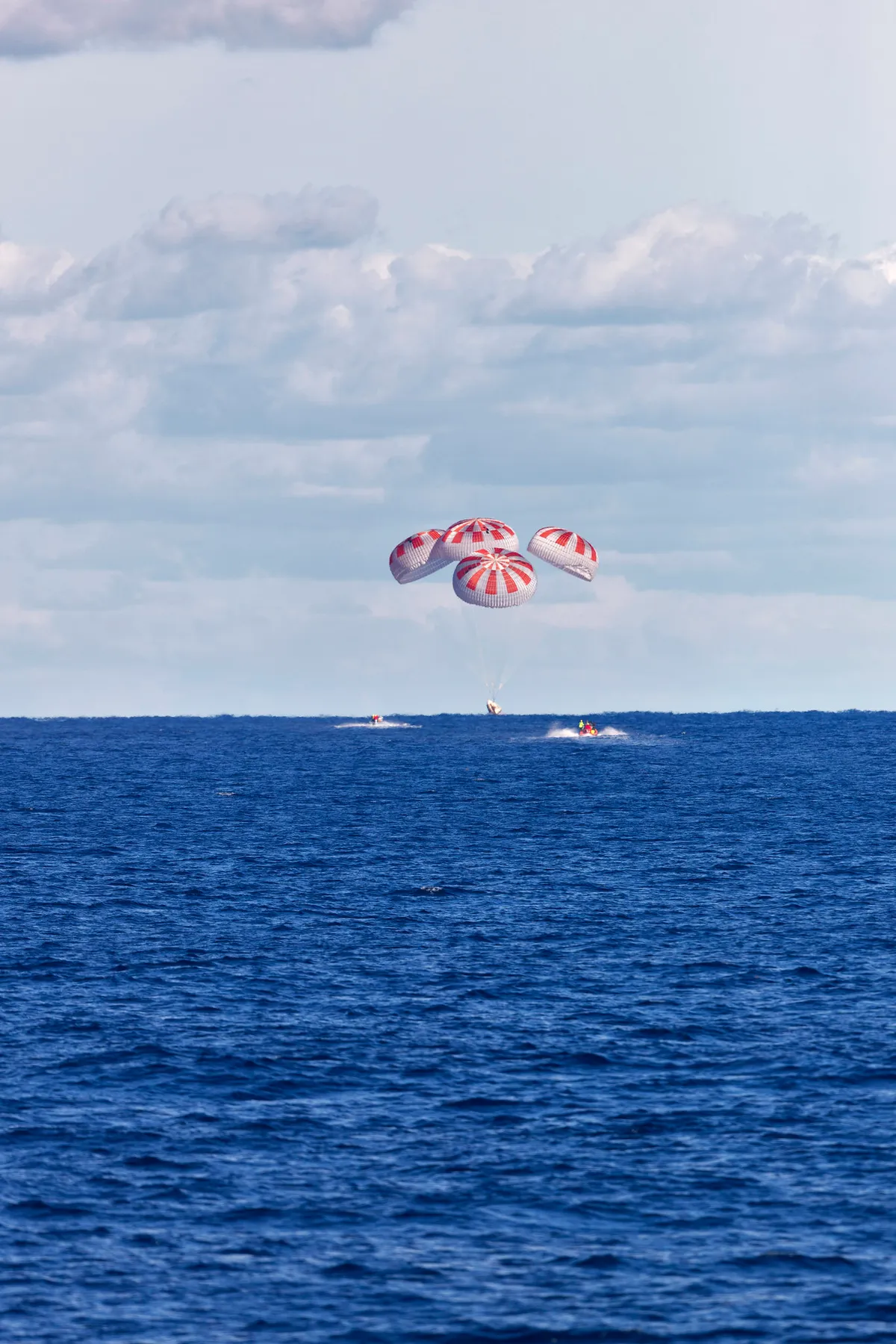What is the Crew Dragon?
The Crew Dragon is SpaceX’s first human-rated vehicle. Its design is based on the Dragon cargo module which SpaceX uses to run supplies to the International Space Station (ISS). In March, it went through its first flight tests in orbit, a step closer to NASA approving it for human flights.
When in operation, the Crew Dragon and rival Boeing’s Starliner will act as taxis, carrying astronauts to and from orbit. They were developed as part of NASA’s Commercial Crew Development programme, which aims to provide a way to launch humans into space from US soil.
Read more:
- How does SpaceX Falcon compare to other rockets?
- Watch a SpaceX Falcon 9 rocket land in full 360-degree video
Since the end of the Space Shuttle in 2011, NASA’s relied on Russian Soyuz capsules to reach the ISS. As well as the political ramifications of the US being solely dependent on Russia, using a single transportation system is unreliable. This was highlighted in late 2018, when a series of issues led to all Soyuz spacecraft being grounded for several months. The issues were quickly solved, but the incident almost ended up with the ISS being abandoned for the first time since 2000.
What could go wrong with the Crew Dragon?
Space vehicles are made up of millions of different parts, but a single defective screw or washer can mean the difference between success and failure.
The trickiest parts of any space mission are launch and re-entry when the spacecraft passes through the atmosphere at vast speed, subjecting craft and crew to extreme accelerations, temperatures and pressures. Though SpaceX has a lot of experience in launching and retrieving the similar Dragon craft, it was these stages of the test that most concerned company founder, Elon Musk.
It was possible that the docking procedure might go wrong, causing the spacecraft to crash into the ISS or damage the docking ring, or that the module might have an air leak. However, the spacecraft had undergone rigorous testing before leaving Earth and NASA would never have allowed the spacecraft near the ISS if it thought there was a genuine risk of either occurrence.
How did it go?
The test was a success. The craft launched on 2 March 2019 from Pad-39A – the same pad where almost all the Apollo and Space Shuttle missions blasted off.
For this first test, the spacecraft was in fact a Crew-less Dragon, as the only passengers were a mannequin covered in sensors (named Ripley after the hero of the Alien movie franchise) and a soft toy of Earth. With no human pilots onboard, the spacecraft operated entirely automatically and docked with the ISS on 3 March.
For four days, astronauts conducted tests confirming its safety. The spacecraft undocked on 8 March, splashing down in the Atlantic Ocean before being picked up by SpaceX’s recovery ship.
What’s the next step for Crew Dragon?
Both SpaceX and Boeing (which is expected to make its own uncrewed test in the coming months) have a way to go before they can start routinely carrying passengers. First, they will have to demonstrate they can safely abort a launch at the last minute, in case of emergency.
Then it will be time for the biggest test of all: the first human flights. Initially the spacecraft will be piloted by two veteran space explorers who will perform a similar mission to that which SpaceX performed in March. Once NASA is happy the spacecraft can carry humans, it will enter rotation as NASA’s main method of transporting astronauts to the ISS.
Read more:
NASA’s goal has always been to forge the way into space so that citizens can follow. The aim of the Commercial Crew Development programme is not just to create a new method of getting people into space, but also to pass the baton of space travel from government hands into the private sector.
What’s SpaceX’s ultimate goal?
SpaceX aims to make spaceflight accessible to more than just government agencies and the super wealthy. The ultimate aim is to make the Crew Dragon completely reusable, which will drastically reduce the cost.
Each spacecraft also contains seven seats, whereas the Soyuz can only hold three, and the high level of automation means that shorter training times are required. The spacecraft could soon be ferrying vast numbers of people to low-Earth orbit.
However, Elon Musk has often said his sights are set much further away than just orbit: he wants to take humanity to Mars. While Crew Dragon isn’t capable of making that journey itself, it is a first step along the 55 million kilometre journey.
Follow Science Focus onTwitter,Facebook, Instagramand Flipboard









